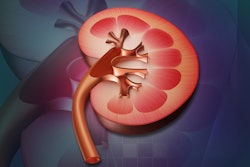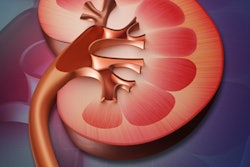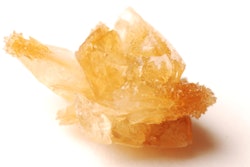
Clinicians need to be more judicious when it comes to using CT for kidney stones, say researchers from Washington. In a new study published online in Urology, they report that patients with active stone disease are exposed to roughly 10 times more CT radiation per year than individuals without kidney stones.
The researchers from the University of Washington in Seattle examined trends in CT utilization for hundreds of thousands of individuals who underwent imaging for initial kidney stone evaluation and three years of follow-up surveillance between 2007 and 2016. They found that CT usage rates were up to 12-fold higher for those with active kidney stones than for those without stones.
"Despite debate about the risks of CT-related radiation, overall CT utilization remains high among patients with active stone disease," wrote lead author Dr. Jessica Dai and colleagues (Urol, August 9, 2019). "Over three years of follow-up, these patients received significantly more CT imaging than those with inactive stone disease and controls. ...This has implications on cumulative radiation exposure over time."
CT for kidney stones
The increasing reliance of clinicians on CT to evaluate acute medical conditions, including kidney and urinary stones, is well-documented. In particular, CT usage for stones in emergency settings has climbed steeply over the past decade. This pattern has given rise to concerns over the potential harms associated with excessive CT radiation exposure.
In the current study, Dai and colleagues investigated this topic by tracking the cumulative number of CT, ultrasound, and x-ray exams that individuals with private insurance underwent in a three-year period following an initial evaluation for suspicion of kidney stones. They obtained the information from MarketScan, a U.S. insurance claims database, and categorized the deidentified patient data into the following distinct cohorts:
- 112,140 patients with active stone disease (i.e., those who either had at least two instances of kidney stones) and underwent surgical treatment
- 215,276 patients with active stone disease who did not undergo surgical treatment
- 175,228 patients with inactive stone disease (i.e., those who had only one instance of a kidney stone)
- 502,744 individuals who were not affected by kidney stones and served as the control
After three years of follow-up surveillance, patients with active stone disease ended up having between nine to 12 times the number of CT exams as the control group did, depending on the type of treatment the patients received. In addition, the difference in usage rates between those with and without kidney stones was greater for CT than it was for x-ray and ultrasound.
| Medical imaging usage rates for individuals with or without kidney stones | ||||
| 3 years of follow-up surveillance | Control (no stone disease) | Inactive stone disease | Active stone disease (no surgery) | Active stone disease (surgery) |
| No. of CT exams per patient* | 0.16 | 1 | 1.53 | 2.02 |
| No. of x-ray exams per patient | 0.32 | 0.32 | 0.85 | 3.28 |
| No. of ultrasound exams per patient | 0.72 | 0.54 | 0.69 | 0.83 |
Furthermore, the researchers discovered that a relatively sizeable percentage of patients with active stone disease received an exorbitant number of CT exams, compared with the control group.
During the three-year period, 675 patients (0.6%) with active stone disease who underwent surgery had between 10 to 15 CT exams, and 144 (0.13%) received more than 15 CT exams. The rates were slightly lower for patients with active stone disease who did not undergo surgery: 0.34% received 10 to 15 CT exams, and 0.09% received greater than 15 CT exams. In contrast, only 0.05% of the control group received 10 to 15 CT exams and 0.01% received more than 15 CT exams.
Worrisome radiation
The researchers also estimated radiation exposure for the different cohorts using previously published values for standard-dose CT and low-dose CT exams.
Their analysis of these estimates revealed that, in the first year alone, more than 10% of patients with active stone disease were exposed to CT radiation doses exceeding the 20 mSv annual occupational limit suggested by the International Commission on Radiological Protection. In comparison, about 1% of the control group was exposed to more than 20 mSv of radiation -- roughly 10 times less than those with active stone disease.
| CT radiation exposure in individuals with or without kidney stones | ||||
| Control (no stone disease) | Inactive stone disease | Active stone disease (no surgery) | Active stone disease (surgery) | |
| 1 year of follow-up surveillance | ||||
| % exposed to 20-50 mSv | 1.1% | 4.7% | 9.3% | 10.4% |
| % exposed to > 50 mSv | 0.09% | 0.4% | 0.9% | 1.2% |
| 3 years of follow-up surveillance | ||||
| Mean radiation exposure assuming all standard-dose CT | 2.4 mSv | 14.9 mSv | 22 mSv | 28.3 mSv |
| Mean radiation exposure assuming all low-dose CT | 0.5 mSv | 3.1 mSv | 4.7 mSv | 6.1 mSv |
The authors pointed to several factors that may have contributed to the significantly greater CT utilization rates for patients with active stone disease, compared with the control group. First, individuals with active stone disease are more prone to having recurrent kidney stones, and, thus, clinicians are more likely to order repeat CT exams for them.
Second, most emergency clinicians continue to offer CT as the initial test for kidney stone patients with renal colic, going against best practice guidelines recommended by the American College of Emergency Physicians, the authors noted. In some cases, patients with active stone disease present to the emergency department multiple times for pain caused by the same stone, which often results in "duplicate" CT scans.
Reducing unnecessary emergency CT exams "remains a potential area for continued improvement in stewardship of CT use," they wrote.
Finally, advances in CT technology have allowed for reductions in CT radiation dose, but the adoption of low-dose and ultralow-dose CT has nevertheless stayed low, at less than 8% of all CT exams, according to the researchers.
"Routine use of low-dose CT could dramatically reduce the cumulative radiation exposure risk to stone patients over time, though further research remains to be performed in this area," they wrote.




















